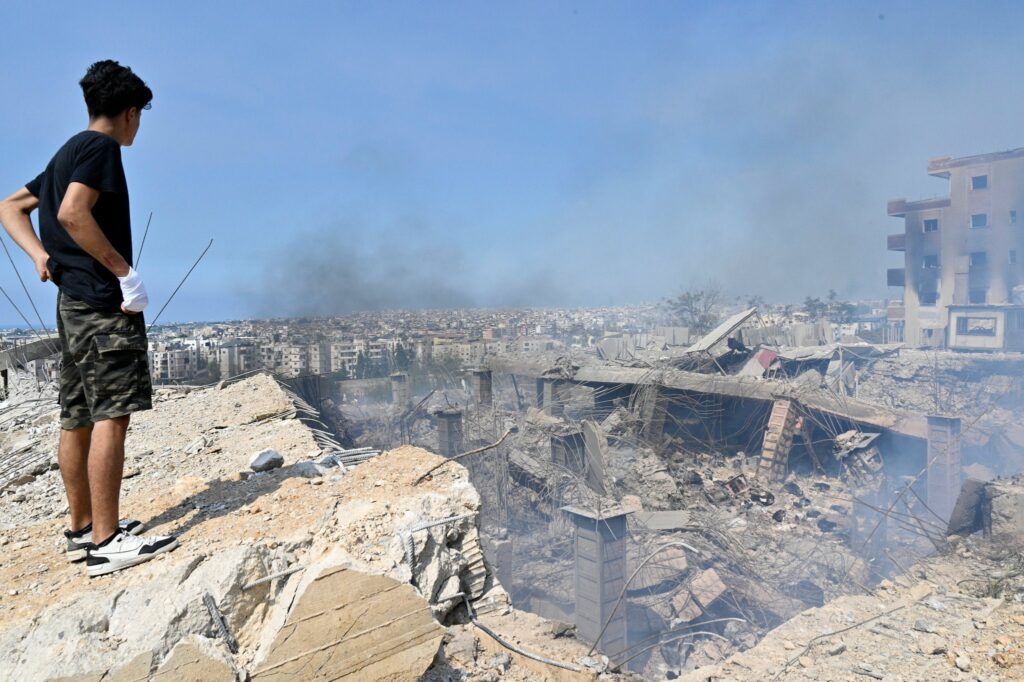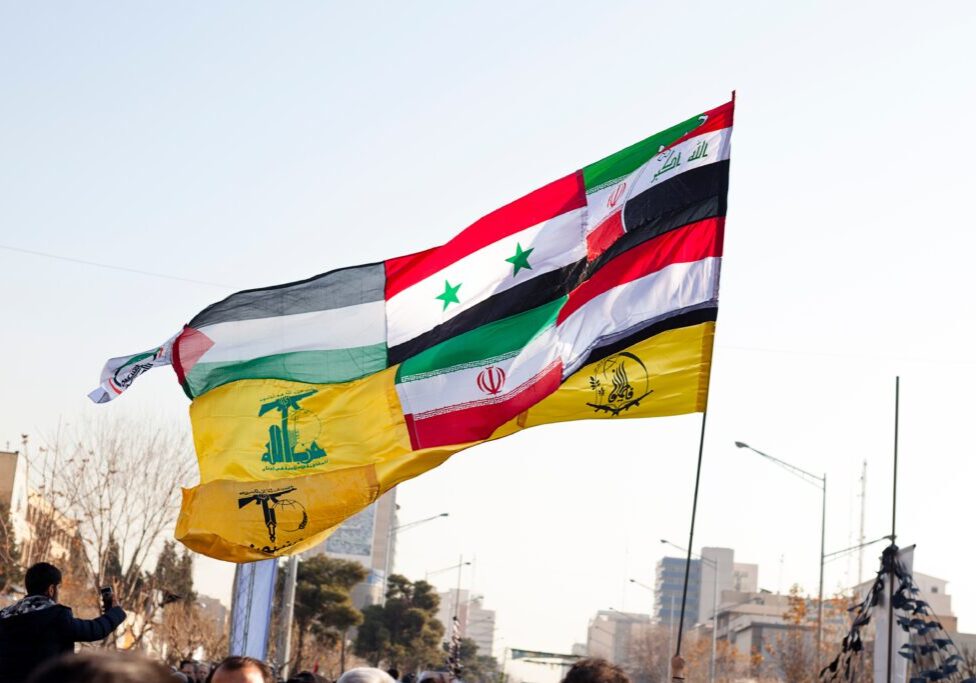Australia/Israel Review
Battle for the North
Oct 16, 2024 | Ilan Evyatar

Israel on the offensive
Israel’s military strategy shifted dramatically in September 2024. After nearly a year of caution in the north while focussing on Hamas in Gaza, Jerusalem suddenly launched a bold assault against Hezbollah in Lebanon that has changed the dynamic of its conflict with not only Hezbollah, but all of Iran’s regional proxies.
On October 8, 2023, one day after the Hamas assault that left around 1,200 Israelis dead, Hezbollah opened a second front on Israel’s northern border with Lebanon. Hezbollah’s objective was to show solidarity with Hamas and force Israel to divert combat resources from the Gaza Strip. Northern communities were bombarded with rocket, drone and anti-tank missile fire daily, displacing more than 60,000 Israelis.
For nearly a year, Israel responded to the daily Hezbollah provocations with only limited, targeted strikes on Hezbollah assets in Lebanon, while prioritising its efforts in Gaza. However, as Hezbollah gradually escalated its attacks over recent months, it became clear that Israel’s tit-for-tat approach would no longer suffice.
On Sept. 23, the Israel Defence Force (IDF) launched Operation Northern Arrows, officially marking a dramatic shift in strategy. This offensive aimed to reduce Hezbollah’s military capabilities, particularly its arsenal of long-range and precision-guided missiles. The Israel Air Force struck over 2,000 Hezbollah targets across southern, central and northern Lebanon. The operation targeted terrorist operatives, rocket launchers, ammunition depots, UAVs and cruise missiles, many of which were hidden in civilian areas. Hezbollah’s intelligence network also suffered significant blows, with command centres and information-gathering facilities destroyed. Israeli officials claim that over 50% of Hezbollah’s missile and rocket arsenal had been destroyed by Oct. 7.
The IDF’s offensive approach had been foreshadowed days earlier when, on Sept. 17, thousands of pagers used by Hezbollah operatives exploded, killing at least 12 people and injuring thousands, almost all Hezbollah operatives, in Lebanon and Syria. The following day, Hezbollah walkie-talkies exploded, causing additional casualties. Within a 48-hour period, Hezbollah reported the deaths of at least 42 operatives with a further 3,500 wounded due to the audacious booby traps, which it attributed to Israeli sabotage.
Hezbollah’s leadership has not been spared. On Sept. 20, the IDF eliminated Ibrahim Aqil, the head of Hezbollah’s military operations and commander of its elite Radwan commando force, in an airstrike in Beirut. Aqil was one of Hezbollah’s top military strategists, and his death, along with 14 other senior commanders of Radwan, dealt a severe blow to Hezbollah’s ability to conduct military operations.
The climax of Israel’s offensive came on Sept. 27, when the IDF targeted Hezbollah’s Secretary-General Hassan Nasrallah. An airstrike on Hezbollah’s underground headquarters in Beirut, using multiple bombs targeted at the same spot to penetrate some 20 metres of earth and concrete, killed Nasrallah and other senior figures – including Ali Karaki, the commander of Hezbollah’s “southern front”. A senior Iranian Islamic Revolutionary Guard Corps (IRGC) adviser to Hezbollah, Major General Abbas Nilforoushan, was also killed in the strike. This strike marked a significant turning point in the conflict.
Israel’s relentless offensive continued over the following days, targeting other top Hezbollah operatives responsible for overseeing rocket and missile attacks against Israel, as well as missile storage, production and launch sites. By Sept. 29, Hezbollah had lost most of its senior leadership.
On Oct. 1, Iran raised the stakes by launching a massive attack on Israel in what it said was revenge for Nasrallah’s killing. Teheran labelled its assault True Promise 2 – a follow-up operation to its previous attack on Israel on the night of April 13-14. However, unlike True Promise 1, which was telegraphed well in advance and mostly employed slow-moving drones and cruise missiles, True Promise 2 involved around 200 fast-travelling ballistic missiles. Dozens of these penetrated Israel’s defences and caused damage to the Nevatim airbase – but the only fatality was a Palestinian man near Jericho.
Earlier that day, Israel had launched what it described as a limited ground offensive into southern Lebanon, sending in the elite 98th Division to seize ground, thus denying Hezbollah a direct line of fire on Israeli communities. Within a week, four IDF divisions were involved in the fighting inside Lebanon.
Although 11 Israeli soldiers have been killed in the fighting at the time of publication, the ground invasion has progressed far more smoothly than the 2006 Lebanon war, with very few successful Hezbollah ambushes of the sort seen in that conflict.
Symbolically, Israel has taken the Shi’ite village of Maroun al-Ras, less than a kilometre from the border and the site of heavy fighting in 2006. The village overlooks the Israeli community of Avivim. Teheran had funded a promenade called “Iran Park” on the outskirts of Maroun al-Ras. This became a pilgrimage site for Iranian officials who would use it to look out over Israel and make statements about its imminent demise. The park also featured a large cut-out image of Gen. Qassem Soleimani, the former IRGC Quds Force commander who spearheaded Iran’s “Ring of Fire” strategy against Israel.
Soleimani was assassinated by the United States in 2020. IDF troops demolished the “park” and the statue of Soleimani and raised the Israeli flag.
On Oct. 3, Israel dealt another blow to Hezbollah by apparently eliminating Nasrallah’s cousin and presumed successor, Hashem Safieddine. However, at the time of writing, Hezbollah had yet to confirm his death, although Israeli Prime Minister Binyamin Netanyahu said in a speech to the Lebanese people on Oct. 8 that Israel had eliminated “Nasrallah’s replacement, and his replacement’s replacement.”
Even more dramatically, there were reports that Soleimani’s successor as head of the Quds Force, Esmail Qaani, might also have been injured or killed in the same strike. Qaani had travelled to Lebanon after Nasrallah’s death, and as of writing, he has not been seen in public or heard from since the strike, though Iran denies he is dead.
Regardless of Qaani’s fate, Israel has clearly gained considerable momentum in its conflict with Hezbollah. While the Iranian proxy has expanded the range of its rocket fire, hitting the Haifa area and the Carmel and launching a couple of cruise missiles at Tel Aviv, it has not achieved anything like the apocalyptic scenarios that were predicted for an Israeli war with Hezbollah. These had predicted thousands of missiles per day for weeks, overwhelming Israeli defences, which were expected to bring down entire buildings and cause mass Israeli civilian casualties.
In fact, Hezbollah has begun showing definite signs of strain, with Naim Qassem, who served as Nasrallah’s deputy until his assassination, calling for a ceasefire in a speech on Oct. 8, saying, “We support the political efforts led by [Lebanese Parliament Speaker Nabih] Berri under the banner of achieving a ceasefire. Once the ceasefire is firmly established and diplomacy can reach it, all other details will be discussed, and decisions will be made collaboratively.”
This statement was a far cry from the bluster Nasrallah traditionally deployed and appeared to be the first time the group has agreed to decouple itself from the Gaza conflict, having previously stated it would only halt its attacks when a ceasefire was reached in Gaza.
Israel has not responded to this overture, viewing it as a desperate plea resulting from the heavy blows being inflicted upon Hezbollah by Israeli forces.
The question now is what Israel’s endgame in Lebanon will be.
Will it demand the enforcement of UN Security Council Resolution 1701, which ended the 2006 war and called for Hezbollah to withdraw north of the Litani River, 20 to 30 kilometres from the Israel-Lebanon border – something never implemented? Will it demand the provisions of both 1701 and the earlier Resolution 1559, which call for the dismantling of all armed groups in Lebanon (except for the national armed forces) including Hezbollah, finally be implemented? Will it seek to establish a buffer zone in southern Lebanon if this is not done, as existed before 2000?
In a recent column, Zohar Palti, the influential former head of the Mossad’s intelligence directorate and the Political-Military Bureau at the Ministry of Defence, wrote that Hezbollah as we knew it “no longer exists” and that there is now a golden opportunity for Lebanon to regain its sovereignty under “one flag and one army.” However, he noted that without extensive involvement and assistance from the US, Europe and the Gulf states, this is unlikely to happen, and thus Israel may feel it has no choice but to adopt the post-Second Intifada strategic model of continuously taking action against any force build-up, as it has done in the West Bank and is expected to do in Gaza after mostly dismantling Hamas’ military capabilities there.
Looming over everything is the shadow of Iran. The Islamic Republic has been humiliated and humbled over recent weeks. Its primary asset in the region, Hezbollah, into which it invested billions of dollars, has seen its capabilities drastically reduced. Iran’s “Ring of Fire” strategy to surround, constantly harass and deter Israel, leading to its eventual destruction, has been severely damaged, with Hamas almost entirely dismantled as well.
And amidst all of this, Israel must decide how to respond to the Iranian ballistic missile attack of Oct. 1. Some voices, such as former Israeli Prime Minister Naftali Bennett, have called for seizing the opportunity to strike sites employed in Iran’s nuclear program, which is rapidly approaching full weapons capabilities. However, the US, while supporting some form of Israeli retaliation, opposes this, fearing it could lead to all-out regional war.
Other options include attacks on Iranian military, air defence and intelligence targets, on symbols of the regime, or on its oil refineries and export terminals, which are crucial to its economy. The latter option would likely draw global ire as it could cause a spike in oil prices. Meanwhile, Iran is threatening to target its neighbours’ oil production facilities in retaliation, which would further spike prices.
Israel’s response is expected any day, and the only question appears to be what will be targeted.
On Oct. 9, Defence Minister Yoav Gallant said, “The Iranian attack was aggressive but inaccurate. In contrast, our attack will be deadly, pinpoint accurate, and most importantly, surprising – they will not know what happened or how it happened. They will just see the results.”
It is not only Israelis and the Iranians who are awaiting those “results” and where they will take the Israel-Iran conflict – so are governments around the world.






